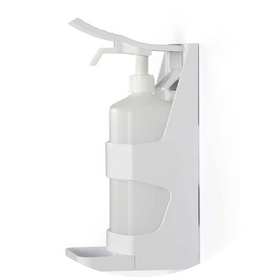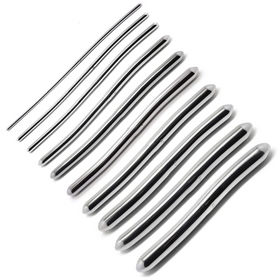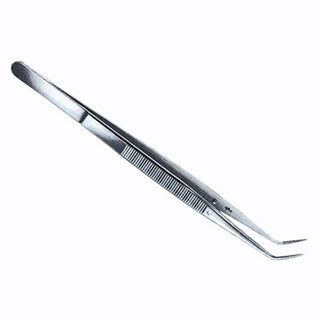Knowing laboratory equipment is important for scientists, teachers, professors, and lab workers. It helps ensure precision, safety, and reliability. The tools used in these settings directly impact the quality of results, whether in cutting-edge research, diagnostic testing, or science education.
In this guide, we will look at the key lab supplies used in different lab settings. We will also share tips for choosing, using, and caring for your tools to ensure reliable results.
Essential Laboratory Equipment in Labs
Behind every accurate test result in a lab is a set of trusted tools. Microscopes help scientists explore the tiny details of cells, while centrifuges spin down samples to separate their components. Spectrophotometers measure the volume of substance, and pipettes ensure liquid is handled accurately.
Autoclaves keep tools sterile. Balances ensure exact measurements, and fume hoods and biosafety cabinets protect people from hazardous materials. Research shows that tools need to be used and cared for properly. This helps prevent contamination and ensures reliable results (Cheesbrough, 2009).
How to Choose the Right Tools for Your Lab
Selecting the correct laboratory equipment is a crucial first step in setting up or upgrading your lab. The choice affects everything from research integrity to safety and budget efficiency. Here are some key criteria to consider:
Define Your Laboratory Needs
Start by identifying the core functions your lab performs. Are you conducting routine diagnostics, research experiments, or educational demonstrations? Your use decides if you need high-precision tools, tough and durable equipment, or basic gear for students.
Consider Accuracy and Sensitivity
Different instruments offer different levels of precision. For example:
- A research lab studying molecular biology may need micropipettes with sub-microliter accuracy.
- A teaching lab may suffice with manual pipettes with a broader range.
Evaluate tools based on measurement resolution, reproducibility, and detection limits.
Review Quality and Compliance
Choose tools from reputable manufacturers that comply with international quality standards. Equipment certifications and warranties are indicators of reliability and regulatory compliance.
Evaluate Usability and Ergonomics
Especially in high-use environments, ease of use and ergonomic design are critical. Look for features such as intuitive interfaces, comfortable handling, and minimal maintenance requirements.
Check Compatibility and Support
Ensure that the equipment you select is compatible with existing lab workflows or other instruments. Also check:
• Availability of consumables and spare parts
• Local technical support and maintenance services
• Software integration (for digital devices)
Plan for Budget and Lifecycle Costs
Consider the total cost of ownership, including initial purchase, calibration, servicing, training, and eventual replacement. Investing in slightly more expensive, robust tools can save costs over time through reliability and longer service life.
Maintaining Lab Equipment: Best Practices for Longevity and Accuracy
Proper maintenance of lab equipment is essential for ensuring accurate results, reducing downtime, and protecting users. According to the National Centre for Biotechnology Information (US), adopting a few simple habits can greatly improve the reliability and lifespan of laboratory tools.
1. Calibrate Regularly
Regular calibration is key to accuracy. Instruments such as:
-
Pipettes
-
Balances
-
Spectrophotometers
2. Clean and Sterilise Thoroughly
Reusable tools like laboratory glassware and metal instruments must be:
-
Cleaned after every use
-
Sterilised to prevent cross-contamination
Proper sterilisation also extends the life of your tools.
3. Schedule Preventive Maintenance
Don't wait for tools to fail. Book regular service checks to:
-
Catch small issues early
-
Avoid costly repairs or breakdowns
-
Maintain consistent performance
4. Store Equipment Correctly
Sensitive instruments should be stored in:
-
Clean, dust-free areas
-
Temperature-controlled environments
This reduces the risk of damage and ensures readiness.
5. Train Staff Effectively
Even the best equipment won’t perform if misused. Provide training to:
-
Ensure proper handling and storage
-
Reinforce cleaning protocols
-
Build a culture of care and accountability
Medilab Marketplace: Trusted Supplier of Laboratory Supplies in Australia
At Medilab Marketplace, we provide a centralised platform for sourcing high-quality laboratory supplies across scientific, healthcare, and educational environments. Whether you're equipping a diagnostic lab, research centre, or high school science room, we help streamline procurement with access to vetted vendors and compliant lab-grade products.
Our laboratory collection includes the following key categories:
-
Laboratory Glass – From test tubes and flasks to measuring cylinders and burettes, ideal for precision work in chemistry and biology.
-
Laboratory Plastic – Lightweight, shatter-resistant items like cryotubes, beakers, funnels, and cuvettes for day-to-day use.
-
Laboratory Equipment – Spatulas, caps, stoppers, inoculation loops, and support tools essential for microbiology and sample prep.
-
Microscopes and Accessories – Microscopes, slides, slide mailers, and storage boxes for all types of cell analysis and tissue inspection.
-
Pipettes – Pipette tips, micropipettes, Pasteur pipettes, and more to ensure accurate liquid transfer in clinical and academic labs.
-
Sterilisation – Autoclaves and sterilisation tools for safe decontamination of reusable instruments.
-
Measurement Tools – Measuring scoops and devices used in formulation, sample prep, and standardisation.
-
Mixers – Mortars and pestles to support manual mixing and grinding of samples.
-
Racks and Storage – Including test tube racks, tech bins, and trays to keep workstations organised and efficient.
-
Fridges and Freezers – Lab-grade storage for temperature-sensitive materials.
🛒 View All Laboratory Supplies
At Medilab Marketplace, we help laboratory professionals, researchers, teachers, and clinicians build reliable, compliant, and high-performing lab environments. By offering a wide range of scientifically validated tools and equipment, we support accurate results, safe workflows, and long-term value in every setting.
References
-
Cheesbrough, M. (1984). Laboratory equipment—where are the tools to do the work? BMJ, 288(6435), 1978–1982. doi: https://doi.org/10.1136/bmj.288.6435.1978
-
National Research Council (2011). Working with Laboratory Equipment. National Academies Press (US). Available at: https://www.ncbi.nlm.nih.gov/books/NBK55884/
-
Australian Government. Department of Education – National Science Statement. https://www.education.gov.au/national-science-statement





